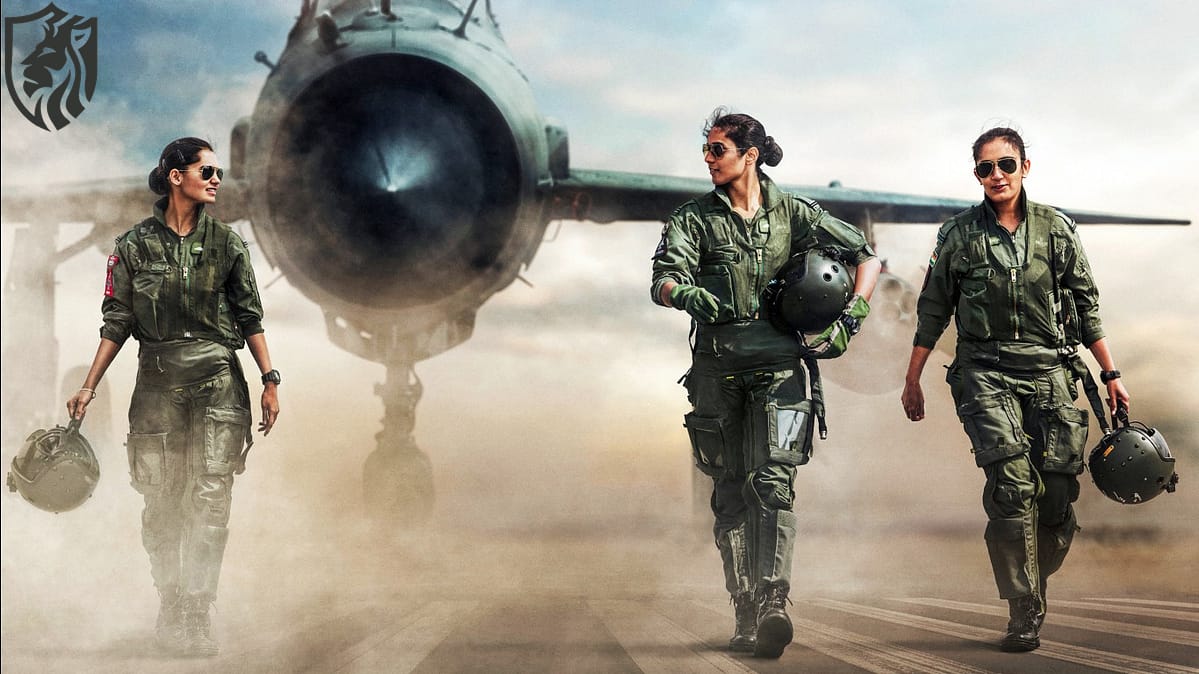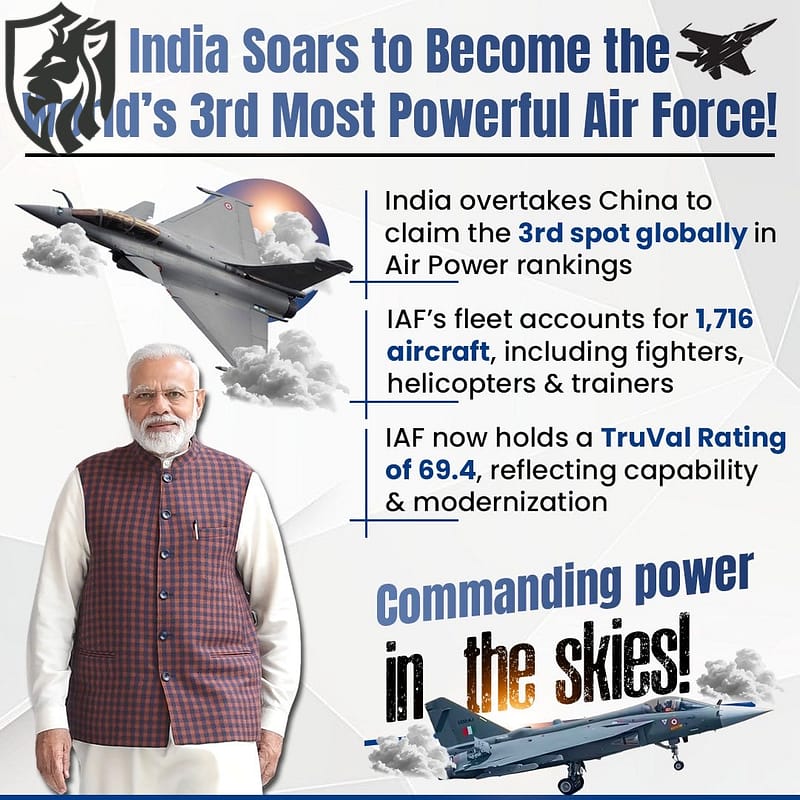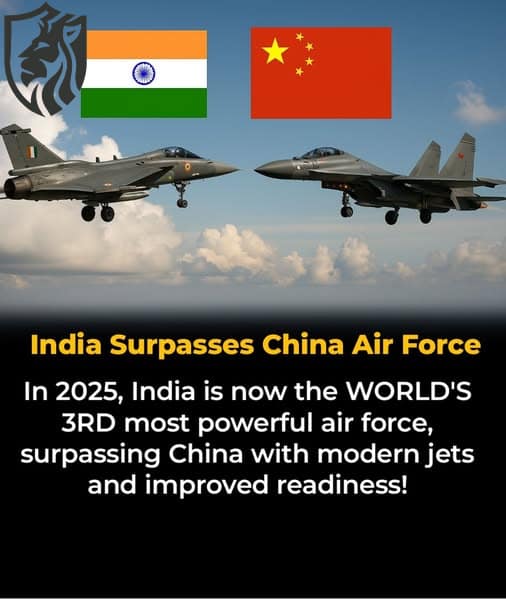
Indian Air Force Ranking — Hype vs Real Capability
Why this ranking matters now
India’s new position on a global list has ignited debates across Asia’s defence circles. The Indian Air Force ranking at number three, behind the US and Russia and ahead of China, raises obvious questions: does a model-based table reflect combat credibility, or does it risk miscalculation? This analysis places the headline in context while preserving the facts that drove the discussion.
What WDMMA’s model actually measures
The World Directory of Modern Military Aircraft (WDMMA) uses a “TruVal Rating” to blend factors such as force size, inventory mix, modernisation, logistics, and support. In its latest table, the US services dominate: the US Air Force at 242.9, the US Navy at 142.4, the US Army at 112.6, and the US Marines at 85.3.
Russia’s air force sits at 114.2, with India’s at 69.4. Advocates argue this approach rewards quality and mission coverage, not aircraft totals alone. Critics counter that any static model risks overstating peacetime potential.
India’s inventory and the balancing act
India fields roughly 1,716 aircraft across fighters, helicopters, and trainers. Its fleet composition—about 31.6% fighters, 29% helicopters, and 21.8% trainers—suggests a broad mission set, spanning air defence, strikes, lifts, and training. Crucially, the fleet receives systems from Russia, the US, Europe, and domestic programs, which diversify options but complicate sustainability. In practical terms, readiness and sortie generation remain decisive for the Indian Air Force ranking, not just the headline number.

Capability vs paper strength: the Chinese critique
A Chinese defence expert argued that military units should be ranked based on battlefield performance rather than paper models. That perspective is not without merit. Real capability hinges on pilot proficiency, munitions stockpiles, electronic warfare resilience, networked command-and-control, and the logistics tail. Moreover, survival against long-range air-to-air missiles, integrated air defence systems, and cyber interference can make static ratings look fragile when crises strike.
Lessons from recent air encounters
Indian outlets reminded readers that India and China are neighbours with contested borders and overlapped airspace. They also noted that operations against Pakistan showcased emerging factors: the appearance of Chinese-origin platforms like J-10CE and JF-17 and missiles such as PL-15.
If the intelligence about the PL-15’s range is correct, it shows that models can’t replace real data on how far it can reach, counter-strategies, and electronic defences Such lessons inform the Indian Air Force ranking far more than table placements.
What really shifts outcomes in modern air power
Three ingredients typically convert force structure into real combat power:
- The two key components are sustained readiness and sortie rate. Maintenance person-hours per flight, spare pipelines, and engine time-on-wing determine tempo.
- Weapons and sensors have coherence. AESA radars, IRST, secure datalinks, and BVR missiles must be integrated, tested, and exercised.
- The implementation of C2 and training realism is crucial. Mission data files, EW reprogramming agility, and coalition-style exercises determine decision speed.
India’s ongoing induction of AESA-equipped fighters, standoff weapons, and network-enabled force packages is material. Yet the decisive edge will come from how well these pieces combine and how quickly tactics iterate. That interplay ultimately validates or invalidates any Indian Air Force ranking.

The methodology gap: where models struggle
Composite rankings inevitably compress nuance. A single score often obscures the differences between the following aspects:
- Short-notice massing versus sustained campaign capacity,
- Peacetime availability versus wartime attrition tolerance, and
- The comparison of declared munitions inventories and replenishment rates under sanction pressure is a crucial aspect to consider.
Independent audits—think FlightGlobal’s annual world fleet tallies or IISS’s force structure chapters—help cross-check claims. However, even those cannot fully capture the electronic order of battle, the EW libraries, or the health of industrial mobilisation. This is why practitioners caution against policy choices based solely on tables.
Strategic communication and miscalculation risk
Rankings generate domestic pride, which can aid recruitment and budgets. Nevertheless, they may also amplify overconfidence. Given the stakes along the Line of Actual Control and the wider Indo-Pacific, policymakers must treat any Indian Air Force ranking as a starting point, not an operational truth. Deterrence rests on credible forces, transparent red lines, and disciplined signalling—not on viral graphics.
A balanced takeaway for practitioners
The WDMMA table offers a structured snapshot and some useful fleet texture. Yet commanders, analysts, and legislators should stress operational testing, realistic exercises, and munitions stock rebuilds.
India’s direction of travel—towards networked sensors, smarter weapons, and higher readiness—looks sound. The real benchmark will be sustained exercise performance, integrated logistics, and the ability to adapt faster than adversaries.






